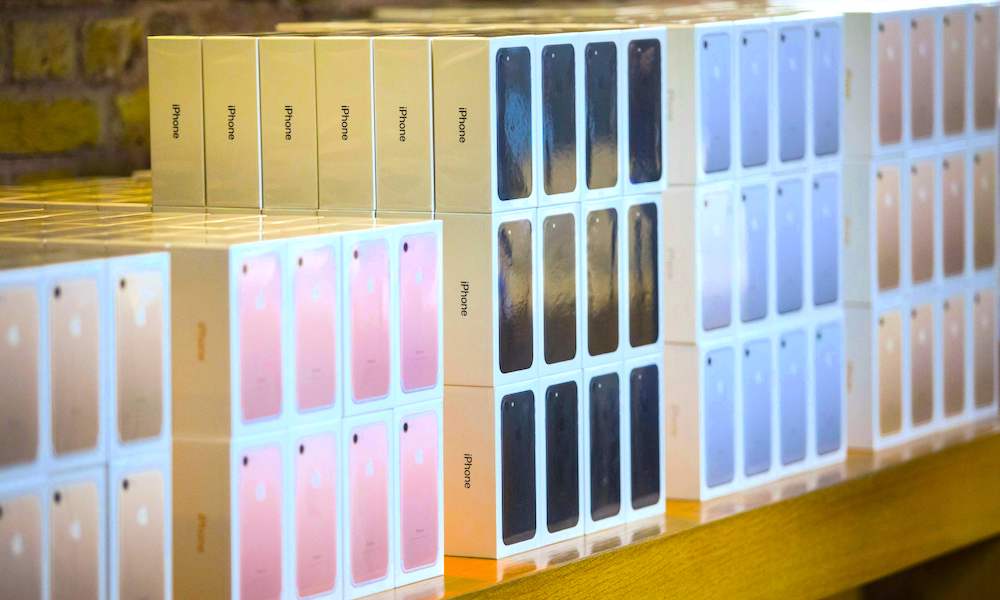This Building Located in Southern China Is ‘Stolen iPhone Central’

Toggle Dark Mode
A goodly number of stolen iPhones end up in a building in a drab grey-and-brown tower in the Huaqiangbei district of Shenzhen. Social media commenters and victims of phone theft have identified the building as China’s “stolen iPhone building,” according to a Financial Times report.
It has been discovered that many iPhones stolen from US and European owners end up on the fourth floor of the Feiyang Times building, where second-hand iPhones from the two countries are sold. While many of these iPhones are legitimate trade-ins returned to network operators or phone retailers when the owners upgrade to the latest hotness, many stolen iPhones have also been tracked to the location.
It is the final destination for second-hand devices that originate in the West and end up in mainland China via wholesalers in Hong Kong.
While the Feiyang Times building is known as a place where you can get your iPhone repaired or upgraded, the report says that it is also well-known as a marketplace for “hot” devices.
The fourth floor of the building has its own specialism: selling second hand iPhones from Europe and the US.
Many of the phones sold here are legitimate trade-ins, returned by western consumers to network operators or phone shops when upgrading to the latest models.
But the tower also sits at a location that Apple community message boards, social media commenters and victims of phone theft have identified as China’s “stolen iPhone building”.
While you’d think there wouldn’t be much of a market for stolen devices that are likely locked, there is a ready market for parts in this region, which is why so many stolen iPhones end up here.
The FT report offers an example of how stolen iPhones end up in this particular building in China. A victim of iPhone theft used Apple’ Find My feature to track his stolen iPhone’s global travels, from his hand in London to the Feiyang Times building in Southern China.
Sam Amrani had his iPhone snatched from his hand while he was replying to a WhatsApp message. The device was stolen by two bad actors riding electric bikes. This is a favorite method of thieves, as it allows them to ride up on the sidewalk, making it easy to do drive-by snatchings of devices. Amrani decided to track his device’s global trip, and he observed the following legs of its journey.
The first leg of its journey was through London streets until it ended up at a backstreet mobile phone repair shop only a few miles away from the location of the theft. It was then passed around to perps unknown at several nearby London addresses.
A week later, the iPhone appeared in Kowloon, Hong Kong, before being quickly transported to Shenzhen, China, and finally ending its journey at the Feiyang Times building in the city.
Amrani then posted about his experience on LinkedIn, discovering several other victims had similar experiences.
Several posts on online message boards from theft victims revealed their purloined phones wound up in several locations in Shenzhen, with nearly all of them ending up in either the Huaqiangbei area or near the city’s border posts with Hong Kong.
While unlocked smartphones are the most valuable prize for thieves, even locked devices will attract buyers, thanks to the components inside the device that can be stripped and sold. As you might imagine, sellers of US and EU iPhones that reside in the building have no idea where the phones came from or the trip they made to get there.
In February, the UK’s Metropolitan Police warned that smartphone theft was on the rise in London, becoming a £50 million-a-year industry. Police also announced they had seized 1,000 stolen devices and made 230 arrests in one week as part of an “intensifying clampdown”. Similar rises in smartphone theft have been reported by officials in Paris and New York.
Locked iPhones are also attractive to scammers who blackmail legitimate owners to unlock the devices. When an iPhone has been locked and put into lost or stolen mode, the screen can display contact information, such as a phone number or email, so the finder can return the iPhone to the owner.
The bad actors will instead use this information to threaten owners by saying that if they don’t unlock the device, they’ll hack their accounts and steal their financial information, or they will expose the content of the iPhones to the owners’ families.
The FT report included a screengrab of a message that had been sent to the owner of a locked iPhone:
“Your old iphone is recycled by us, we are just recycling merchants, we are not the ones who steal your phone, if you don’t remove it, your old phone motherboard will be sold to other customers, maybe they will hack your phone or steal your credit card, or contact your family, so we recommend you remove it as soon as possible so we can restore the factory Settings and erase all data.”
The bad guys are merely bluffing, as there isn’t any way to harvest personal data from a locked phone. But a message like that could freak out someone who isn’t technically savvy enough to know how lost or stolen mode works.
What does all of this mean for iPhone users? You should always take advantage of the iPhone’s built-in security measures, such as Activation Lock and Find My iPhone. Always, always, always, use a strong and unique passcode for your iPhone. This ensures thieves can’t get their grubby paws on your personal data.







